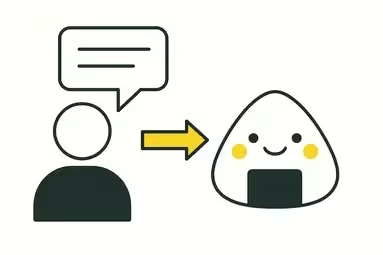.webp)
Interim Product Manager: Your Downturn Growth Lever
Interim product manager playbook: ramp fast, stabilize delivery, and protect momentum in uncertainty. Learn benefits, use cases, and how to hire—start now.

Interim Product Managers in Uncertain Times: Speed, Stability & Focus
When markets wobble and budgets tighten, leaders often default to freezing hiring or slowing delivery. There’s a third way: bring in an interim product manager who can ramp fast, stabilize execution, and keep the roadmap moving—without long-term headcount. Research shows companies that invest with discipline during downturns can outperform peers as conditions improve, especially when they sustain product and innovation momentum.
Why Interim PMs Are a Strategic Tool
Speed without commitment. Interim PMs let you protect critical initiatives through a hiring freeze or headcount cap. The approach aligns with “quiet hiring” and agile talent strategies—flexibly filling skills gaps while controlling long-term payroll.
Momentum beats stasis. Companies that keep shipping (and even launch) during recessions often see stronger product performance and faster recovery. An interim PM helps you sustain that motion with targeted bets and disciplined delivery.
Surgical, not uniform, investment. Top performers avoid blanket cuts; they shift resources toward priority products. Interim PMs make those trade-offs real—re-sequencing roadmaps, protecting the few things that move the needle.
For a service overview and typical outcomes, see our page on getting an Interim Product Manager.
Five Ways Interim PMs Create Leverage
1) Speed without long-term headcount
Interim PMs can step in within days, absorbing a team’s context and creating immediate clarity on goals, measures, and dependencies. That keeps the engine running while you hire thoughtfully (or pause hiring altogether). For examples and timelines, browse Product People’s case studies.
2) Stability in the chaos
Uncertainty strains teams: priorities shift, stakeholders get anxious. A seasoned interim PM re-anchors on outcomes, installs a cadence (weekly risk review, monthly strategy check), and maintains delivery pace even as plans evolve—an execution posture consistent with resilience research from McKinsey.
3) Adaptability by design
Interim PMs thrive in ambiguity across B2B SaaS, FinTech, HealthTech, AI, and more. They bring “pattern libraries” from prior domains, accelerating discovery and reducing rework. To structure this learning, use a simple discovery process like the one in Product People’s guide on product discovery.
4) Keep product moving forward
Halting work can burn market momentum and morale. Interim PMs maintain the roadmap, shepherd launches, and ensure the most important features ship. Evidence from HBR indicates that launches during recessions can outperform—provided they’re grounded in customer value.
5) A fresh, objective perspective
Outsiders can challenge assumptions and de-politicize prioritization. They bring structured frameworks and focus on outcomes, not status quo. Bain’s research on downturn playbooks highlights targeted reinvention and capital re-allocation—mindsets a strong interim PM operationalizes.
When to Hire an Interim Product Manager
- Sudden talent gap: parental leave, attrition, or role change threatens a critical stream.
- Transformation pressure: you’re re-platforming, re-packaging, or shifting to PLG.
- Hiring freeze: you still must deliver OKRs, but FTE approvals are blocked.
- Scaling surge: demand outpaces PM capacity for a quarter or two.
- Complex launch: you need a launch owner to orchestrate PMM, engineering, and CS.
If this sounds familiar, check this signal list article: 5 Signs You Need an Interim Product Manager.
Ramp in Days, Not Months: A 2-Week Plan
Day 0–2: Context sweep
- Stakeholder map and decision rights; pull the last two quarters of OKRs, roadmap, and support themes.
- Create a one-page “state of product” (top risks, blocked decisions, must-win outcomes).
Day 3–7: Discovery and instrumentation
- 6–10 quick interviews (customers + front line: sales, success, support).
- Confirm activation and retention instrumentation; baseline funnel and value events.
- Draft a mini-strategy: two bets to press, two to pause (with metrics).
Day 8–10: “Demo the delta”
- Ship a visible improvement (copy clarity, onboarding step removed, small but high-impact fix).
- Publish a decision log and weekly readout template.
Day 11–14: Lock cadence
- Weekly risk review; bi-weekly “demo the delta”; monthly strategy review with options and trade-offs.
- Align with PMM on launch/enablement if a release is imminent.
For practical templates and checklists, see:
How to Engage: Model, Scope, and Outcomes
Engagement Models
- Full-time interim (3–6 months): own a squad and roadmap end-to-end.
- Part-time/fractional: focus on discovery, prioritization, or a complex launch.
- Bridge-to-hire: stabilize today while you search for an FTE.
Scope to outcomes
Tie scope to a few measurable outcomes: activation uplift, reduced cycle time to ship, launch readiness, or a de-risked decision (e.g., pricing test). Keep WIP capped and publish a public decision log.
Partnering across functions
Interim PMs often amplify PMM and GTM—aligning narrative, pricing inputs, and enablement. For a simple blueprint, share Product People’s post on PM × PMM collaboration.
Prioritization under pressure
Use lightweight frameworks and make trade-offs visible. If your team needs a refresher, this guide to roadmap prioritization frameworks is a handy internal link to circulate.
Why this works in downturns
Multiple analysts note that resilient companies avoid indiscriminate cuts and keep funding advantage bets, supported by agile talent models. Interim PMs are a practical mechanism to do exactly that—protect the few initiatives with real upside and keep learning velocity high.
Conclusion
In uncertainty, interim product managers provide speed, stability, and ruthless focus. They ramp in days, not months; protect the roadmap; and help you place surgical bets instead of across-the-board cuts. Pair an interim PM with disciplined metrics, a steady cadence, and strong PMM partnership, and you’ll maintain momentum now—while setting up to roar out of the recession later.
FAQ
Yes, within 30 days of purchase.They own a product squad or stream for a fixed period—driving discovery, prioritization, delivery, and launches—while installing lightweight systems your team keeps after the engagement.
Use an interim PM for urgent gaps, complex launches, or when headcount is frozen. Shift to FTE when the problem is enduring and the team needs long-term stewardship.
With a focused plan, they can deliver visible improvements in two weeks (e.g., unblock a decision, fix onboarding friction, or clarify a launch plan).
Yes—but the right kind of risk. Studies show companies that invest with discipline during recessions (including targeted launches) can outperform over time. Interim PMs help execute those focused bets without locking in long-term headcount.
By enforcing choiceful prioritization, keeping delivery cadences healthy, and enabling dynamic resource allocation—patterns consistent with resilience research from McKinsey and others.
Read More Posts
.webp)
Acceptance Criteria: Write Clear Requirements Fast

Black Friday Lessons for PMs: Ship Fast, Stay Sane
.webp)
How to Evaluate Pricing Approach Success
.webp)
Product Manager vs. Product Owner vs. Project Manager

Customer Interview Techniques for Better Product Decisions



